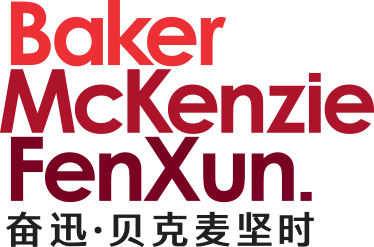In brief
On 26 January 2024, China issued significantly higher merger filing turnover-based thresholds, with immediate effect.
| Revised turnover based thresholds |
| The combined worldwide turnover of undertakings concerned is > RMB 12 billion, or combined PRC turnover is > RMB 4 billion; and |
| At least two undertakings concerned have PRC turnover > RMB 800 million respectively. |
Notably, China has removed a hybrid threshold proposed in the June 2022 draft, which was based on both revenue and market value of target companies and purported to target high-value “killer” acquisitions.
Key takeaways
The new thresholds apply to transactions closed after 26 January 2024. For deals under review but now below the new thresholds, there is a “leeway zone” under the SAMR’s procedural rules, allowing them to proceed without further review and clearance. Where a transaction is conditional on China merger clearance however, engagement with the SAMR is crucial before a decision is made to waive, re-negotiate, or keep the China clearance condition and related clauses (such as efforts, cooperation, remedies, termination, and long stop dates).
The substantial increase in filing thresholds should reduce the number of notifiable transactions in China, but this should not diminish the importance of considering China’s merger control rules on deal feasibility, structure, and timetable. A practical filing strategy remains critical to securing a China merger clearance, and it is worth noting that the SAMR can and does intervene in deals below the threshold if they raise credible competition concerns.
The increased revenue thresholds reflect China’s efforts to streamline its merger review process and stimulate M&A activity. This has been evident over the past few years, as the SAMR has:
- Considered significantly reducing the information required from parties in transactions without competitive concerns.
- Worked on developing guidance on how to assess the competitive impact of transactions involving parties with or without existing or potential relationships.
Background
The original China filing thresholds implemented in 2008 were designed to clearly identify and assess substantial deals that warranted competition analysis. Although this regulatory objective remains relevant, the increased thresholds more adequately reflect market developments over the past 16 years and current economic conditions.
Antitrust scrutiny of so-called “killer acquisitions” has intensified in recent years, particularly in the pharmaceutical and digital sectors. According to this theory of harm, established companies acquire start-ups to prevent potential competition and stifle innovation. This focus has led to some jurisdictions, including Germany and Austria, to introduce a transaction value threshold in an attempt to capture deals that fit this concept. Such acquisitions have also attracted attention from the State Administration for Market Regulation (SAMR), which proposed a similar hybrid threshold in 2022 that would consider both the market value of the target companies and the parties’ revenues. This was however removed in the final text, perhaps in part due to uncertainties around the valuation of the target company. The widespread use of price adjustment clauses in China may further complicate the determination of whether a specific transaction requires notification under such a test, and would have likely reduced clarity and enforceability of the merger control rules.
Although the transaction value threshold was not adopted, the 2024 thresholds retain a significant increase in revenue thresholds. A transaction will trigger a China filing as long as the parties (i) individual China-wide revenue; and (ii) combined worldwide or China-wide revenue reach a certain amount:
| Threshold | 2024 version | 2008 version |
| Individual China-wide revenue of at least two undertakings concerned | RMB 800 million (approx. USD 114 million / EUR 105 million) | RMB 400 million (approx. USD 57 million / EUR 52 million) |
| AND | ||
| Combined worldwide revenue of all undertakings concerned | RMB 12,000 million (approx. USD 1,703 million / EUR 1,570 million) | RMB 10,000 million (approx. USD 1,419 million / EUR 1,308 million) |
| OR | ||
| Combined China-wide revenue of all undertakings concerned | RMB 4,000 million (approx. USD 568 million / EUR 523 million) | RMB 2,000 million (approx. USD 284 million / EUR 262 million) |

© 2024 Baker & McKenzie FenXun (FTZ) Joint Operation Office. All rights reserved. Baker & McKenzie FenXun (FTZ) Joint Operation Office is a joint operation between Baker & McKenzie LLP, and FenXun Partners, approved by the Shanghai Justice Bureau. In accordance with the common terminology used in professional service organisations, reference to a “partner” means a person who is a partner, or equivalent, in such a law firm. This may qualify as “Attorney Advertising” requiring notice in some jurisdictions. Prior results do not guarantee a similar outcome.



